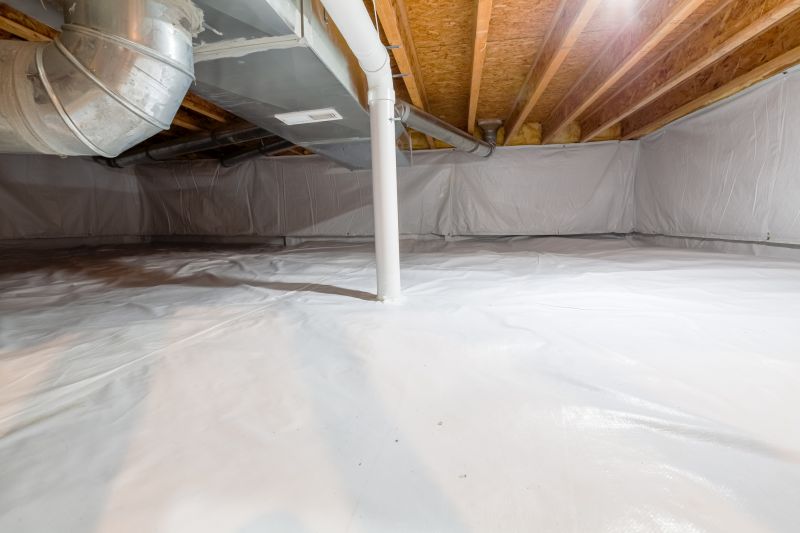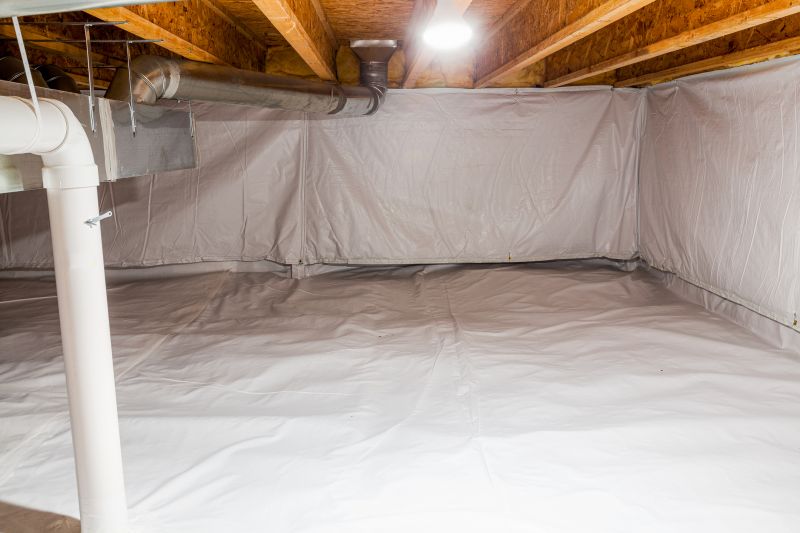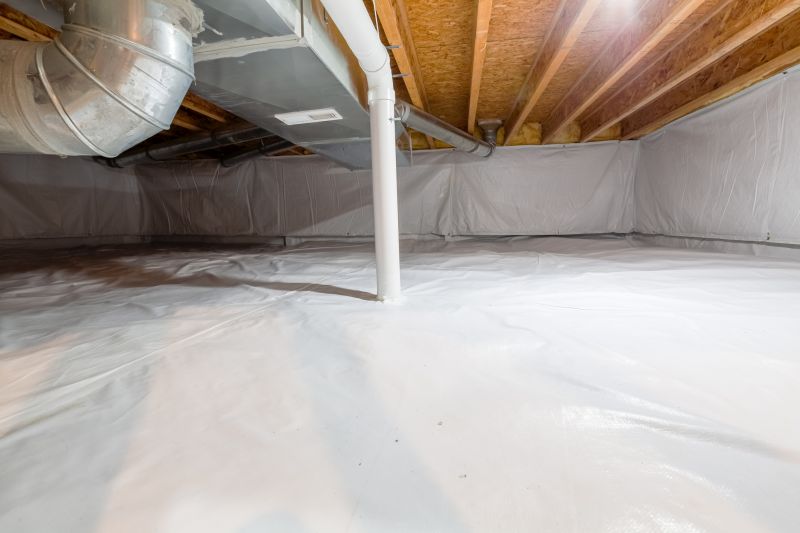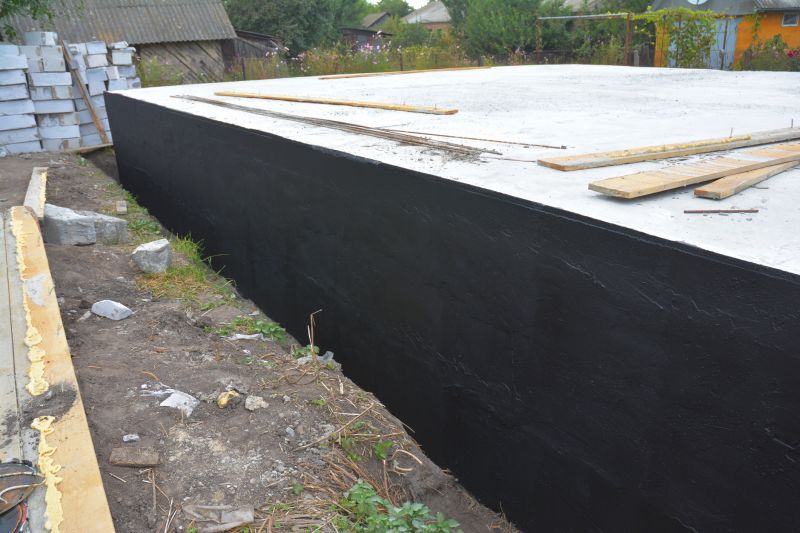Expert Crawlspace Encapsulation to Prevent Moisture Issues
Crawlspace encapsulation involves sealing and insulating the space beneath a building to prevent moisture intrusion, improve indoor air quality, and enhance energy efficiency. Proper encapsulation can significantly reduce mold growth, wood rot, and pest infestations, contributing to a healthier and more durable home environment.
Encapsulation creates a barrier against moisture infiltration, which can lead to mold and structural damage if left unaddressed.
Sealing the crawlspace reduces heating and cooling costs by preventing air leaks and maintaining consistent indoor temperatures.
Reducing mold and dust mites in the crawlspace minimizes airborne contaminants, leading to healthier indoor air.
A sealed crawlspace discourages pests from nesting and entering the living areas of the home.

A fully sealed and insulated crawlspace provides a clean, dry environment that protects the home structure.

Interior view of an encapsulated crawlspace showing vapor barrier and insulation installation.

Completed encapsulation with insulation and sealed vents for optimal moisture control.

Comparison of a typical crawlspace before and after encapsulation work.
Failure to encapsulate a crawlspace can result in increased moisture levels, leading to mold growth, wood rot, and pest infestations. Studies show that unsealed crawlspaces can contribute to up to a 20% increase in indoor humidity, which can negatively impact health and home durability. Additionally, homes with unencapsulated crawlspaces often experience higher energy bills due to air leaks and poor insulation.
| Risks of Not Encapsulating | Impact on Home and Health |
|---|---|
| Mold and Mildew Growth | Can cause respiratory issues and structural damage over time. |
| Increased Humidity | Leads to musty odors and promotes dust mite proliferation. |
| Pest Infestations | Provides a habitat for insects and rodents, increasing health risks. |
| Higher Energy Costs | Air leaks and poor insulation increase heating and cooling expenses. |
| Structural Damage | Moisture can weaken foundation and framing materials. |
| Poor Indoor Air Quality | Contaminants from the crawlspace can migrate into living spaces. |
| Decreased Home Value | Visible issues and ongoing problems can reduce property worth. |
| Potential for Water Damage | Unsealed crawlspaces are more vulnerable to flooding and leaks. |
Encapsulating a crawlspace is a proactive step toward maintaining a healthier, more energy-efficient home. Proper sealing and insulation can mitigate many common issues associated with unprotected crawlspaces, ultimately protecting the structural integrity of the building and the health of its occupants. Filling out the contact form can provide a tailored quote for this essential service.

